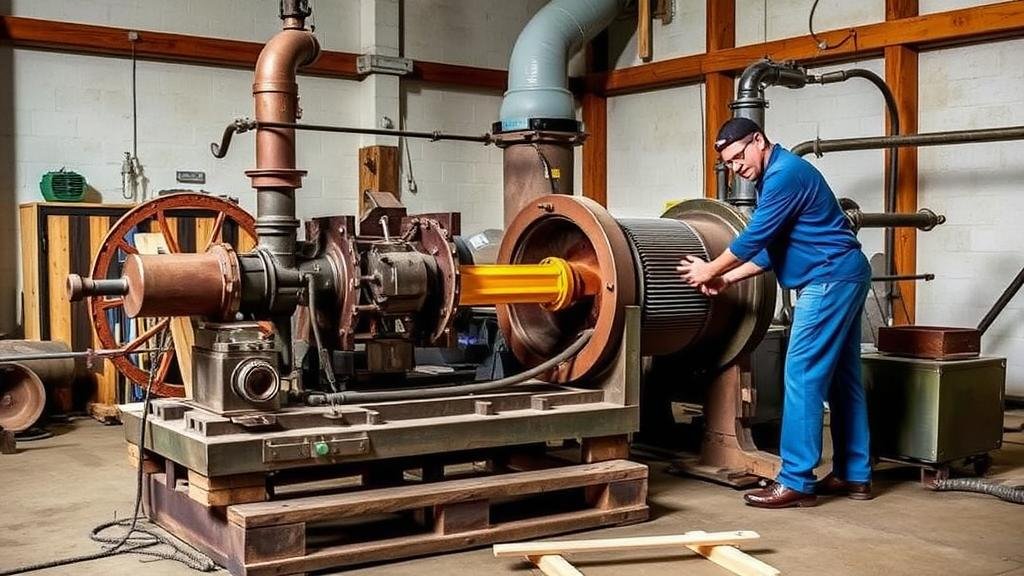Constructing Water-Powered Blowing Machines for Smelting Furnaces
Constructing Water-Powered Blowing Machines for Smelting Furnaces
The use of water-powered blowing machines has been an integral part of metal smelting processes since the dawn of industrial civilization. These systems enhance the efficiency of furnaces by providing regulated airflow necessary for combustion, thereby improving heat generation and metal extraction. This article explores the construction and operation of water-powered blowing machines specifically designed for smelting furnaces.
Understanding Water-Powered Blowing Machines
Water-powered blowing machines utilize the kinetic energy of flowing water to generate mechanical motion. This motion is then converted into aerodynamic force, effectively blowing air into the smelting furnace. Such machines were a significant technological advancement in the late medieval period, allowing for higher temperatures and more consistent air supply compared to manual bellows.
The essential components of a water-powered blowing machine include:
- The water source, which provides the necessary kinetic energy
- A water wheel or turbine that converts water flow into mechanical energy
- Connecting shafts and gears that transmit energy to the blower
- The blower mechanism itself, typically consisting of a bellows system
Basic Principles of Operation
The operation of a water-powered blowing machine is based on simple mechanical principles. The flow of water turns the water wheel, which is connected to a system of gears that amplify its rotational speed. This rotational force is then transmitted to the blower, which uses bellows to draw in air and expel it at a higher pressure into the furnace.
This can be likened to a bicycle pump: just as pedaling generates force to push air into the pump, the turning of the water wheel generates force to push air into the furnace. This is crucial for ensuring that the smelting process achieves sufficient combustion temperatures, typically exceeding 1,200 degrees Celsius (2,192 degrees Fahrenheit) for metals such as iron.
Materials Required for Construction
Constructing a water-powered blowing machine requires materials that can withstand significant mechanical stress and environmental conditions. Recommended materials include:
- Wood or metal for the water wheel
- Steel for connecting shafts and gears to ensure durability
- Reinforced canvas or leather for the bellows, providing flexibility and resistance to wear
- Suitable bearings and seals to reduce friction and prevent water leakage
Steps in Construction
The construction of a water-powered blowing machine is a multi-step process that can be broken down as follows:
- Design the system based on the available water source and desired air output.
- Construct the water wheel or turbine, ensuring it is properly sized to match the flow of water.
- Fabricate the blower mechanism, integrating the bellows and ensuring airtight seals.
- Assemble the components, adjusting the alignment to minimize energy loss.
- Test the system by running water through the wheel and monitoring air output into the furnace.
Case Studies in Historical Context
Historically, water-powered blowing machines have played a critical role in various regions. For example, in the late medieval period, the use of the water-powered finery forge, common in England, allowed for more efficient iron production. The High Weald region, noted for its abundant water sources, became an industrial hub for such applications.
Another notable example is the use of water-powered blowing engines in the 18th-century British iron industry. These machines significantly increased the yield of ironworks, contributing to the Industrial Revolution by allowing for larger and more consistent quantities of molten iron.
Modern Applications and Innovations
While the construction of traditional water-powered blowing machines may seem antiquated, modern applications have emerged that utilize similar principles. Contemporary hydro-powered systems can be integrated with automated controls to optimize airflow based on real-time furnace conditions. Innovations in materials, such as using composite materials for the water wheel and advanced seal technology for the blower, further enhance efficiency and reduce maintenance needs.
Conclusion and Actionable Takeaways
The construction and operation of water-powered blowing machines for smelting furnaces is a fascinating blend of historical ingenuity and modern engineering principles. By understanding the mechanics behind these systems, enthusiasts and industrialists alike can appreciate their role in metal production.
For those interested in integrating such systems, consider the following actionable steps:
- Assess local water resources to determine the feasibility of a water-powered system.
- Engage with historical models to understand optimal designs and configurations.
- Focus on sustainable practices, utilizing the renewable energy of flowing water to reduce carbon footprints.
Incorporating water-powered blowing machines not only pays homage to historical practices but also represents a step towards sustainable industrial methodologies in metallurgy.



